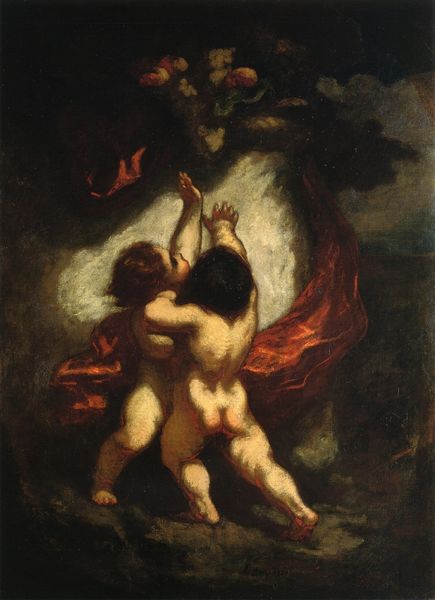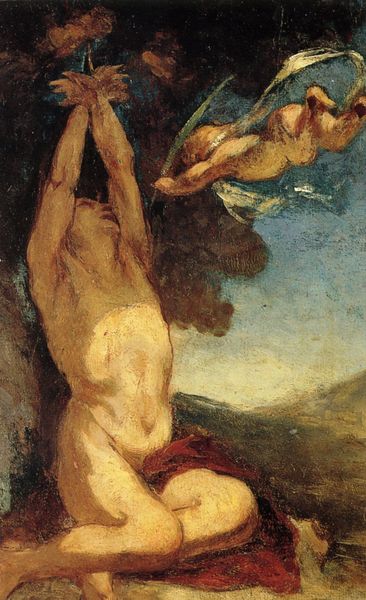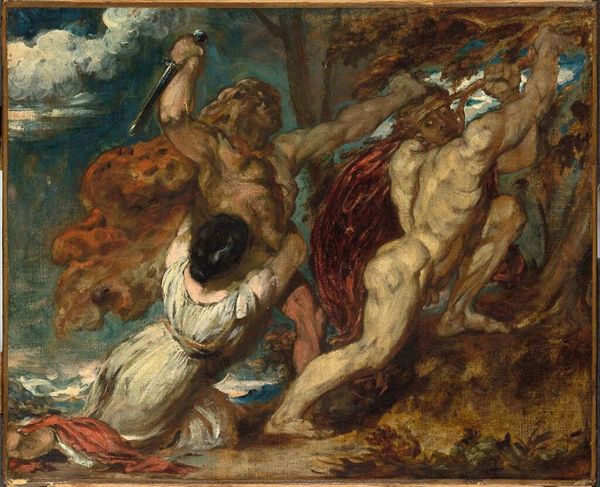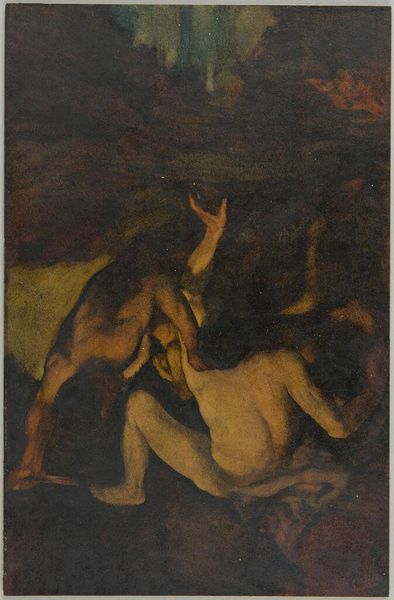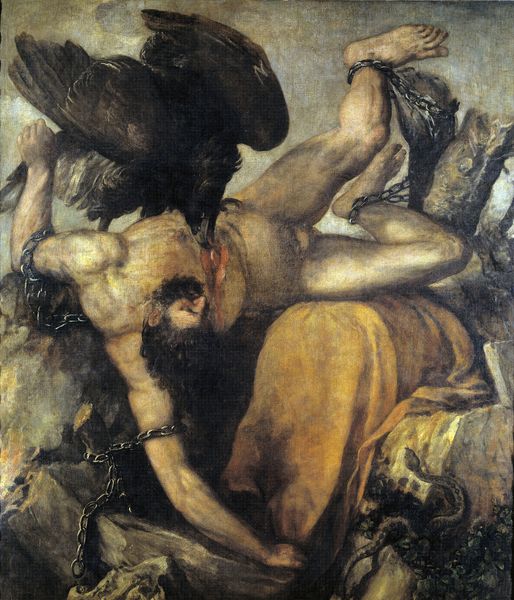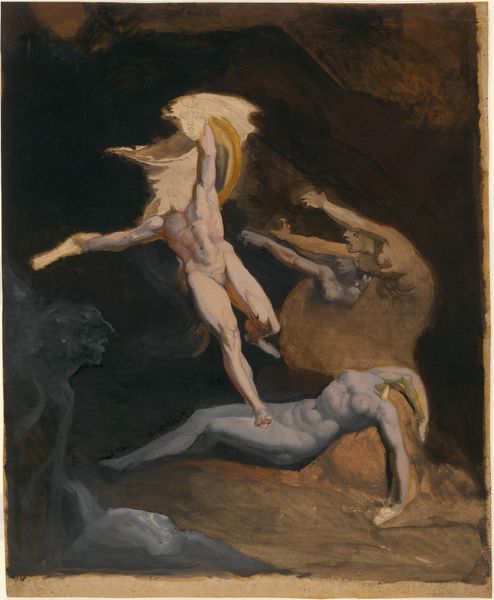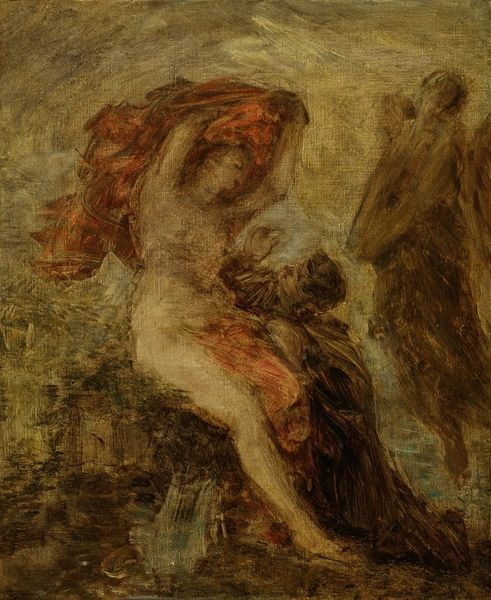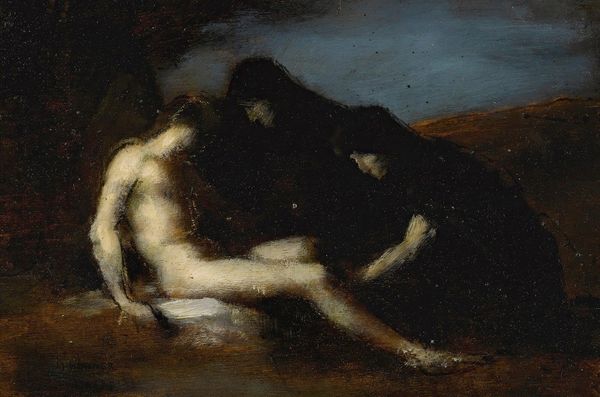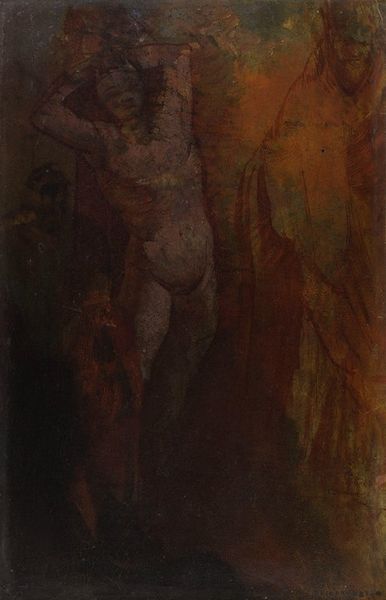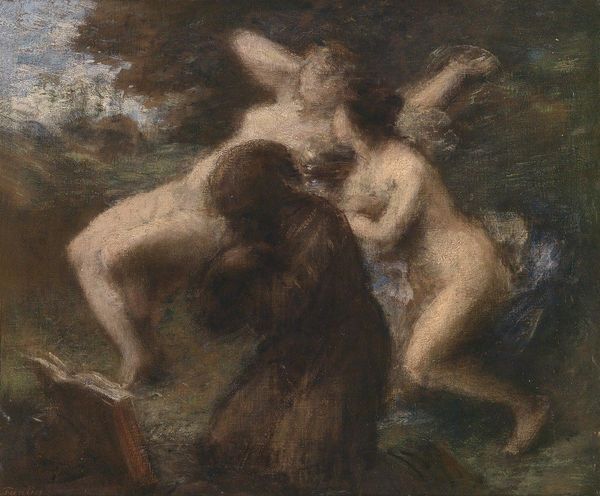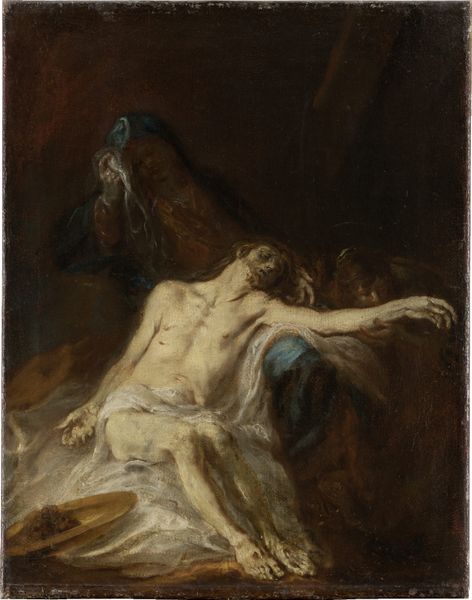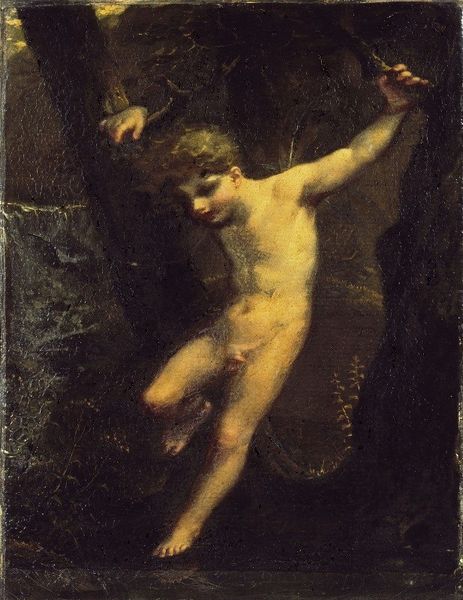
#
abstract painting
#
charcoal drawing
#
possibly oil pastel
#
charcoal art
#
oil painting
#
acrylic on canvas
#
underpainting
#
mythology
#
animal drawing portrait
#
charcoal
#
watercolor
Copyright: Public domain
Editor: Here we have Henri Regnault's "Esquisse pour Automédon avec les chevaux d'Achille," seemingly from 1867. There's so much movement and emotion in what feels like just a sketch! I’m immediately struck by the rawness and power of the horses, contrasted with Automedon’s vulnerability. What do you see in this piece, especially concerning the historical context? Curator: It’s fascinating how Regnault taps into the enduring power of classical mythology while operating within a 19th-century artistic landscape. This sketch is a study for a larger, uncompleted work, revealing a shift in academic art. Consider the Salon system and the pressure to produce highly finished, polished works. Regnault’s choice to leave it as an ‘esquisse,’ a sketch, might be seen as a subtle rebellion. Do you notice anything about how this challenges established notions of "finish" in art? Editor: Absolutely! The sketch-like quality gives it immediacy that a highly polished history painting might lack. It's more about capturing the energy than getting bogged down in details. Curator: Exactly. Think about the rising interest in Orientalism in art during this period, too. Regnault himself was deeply influenced by his travels to North Africa. He aimed to bring an ‘authenticity’ to his works which influenced public perception of other cultures. How does seeing this as a study change your perception of its "authenticity"? Editor: That's a great point. Knowing it’s a preliminary work makes me think more about Regnault’s process and how he navigated the artistic currents of his time, including his interactions with the academy. Curator: And considering the socio-political climate – the rise of nation-states, colonial ambitions, and the ever-present weight of the classical past – it gives "Esquisse" added resonance, wouldn't you say? Editor: It does indeed. I now see this sketch not just as a mythological scene, but as a product of its time, reflecting both the academic traditions and a budding desire for artistic innovation. Curator: Precisely! It makes you question how Regnault, influenced by orientalism and expectations for official art, navigated painting scenes with ancient, “universal” themes. Thank you, I'm off to think about what to add to my syllabus.
Comments
No comments
Be the first to comment and join the conversation on the ultimate creative platform.
